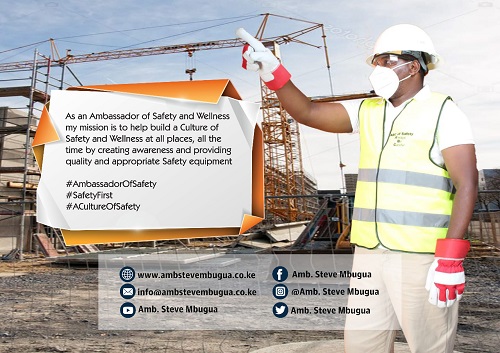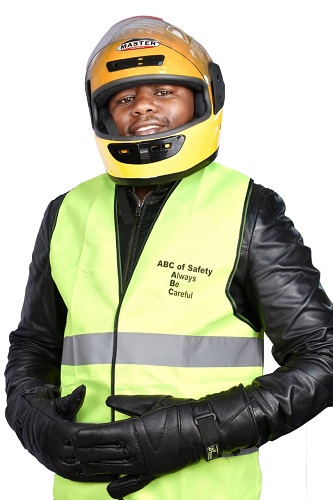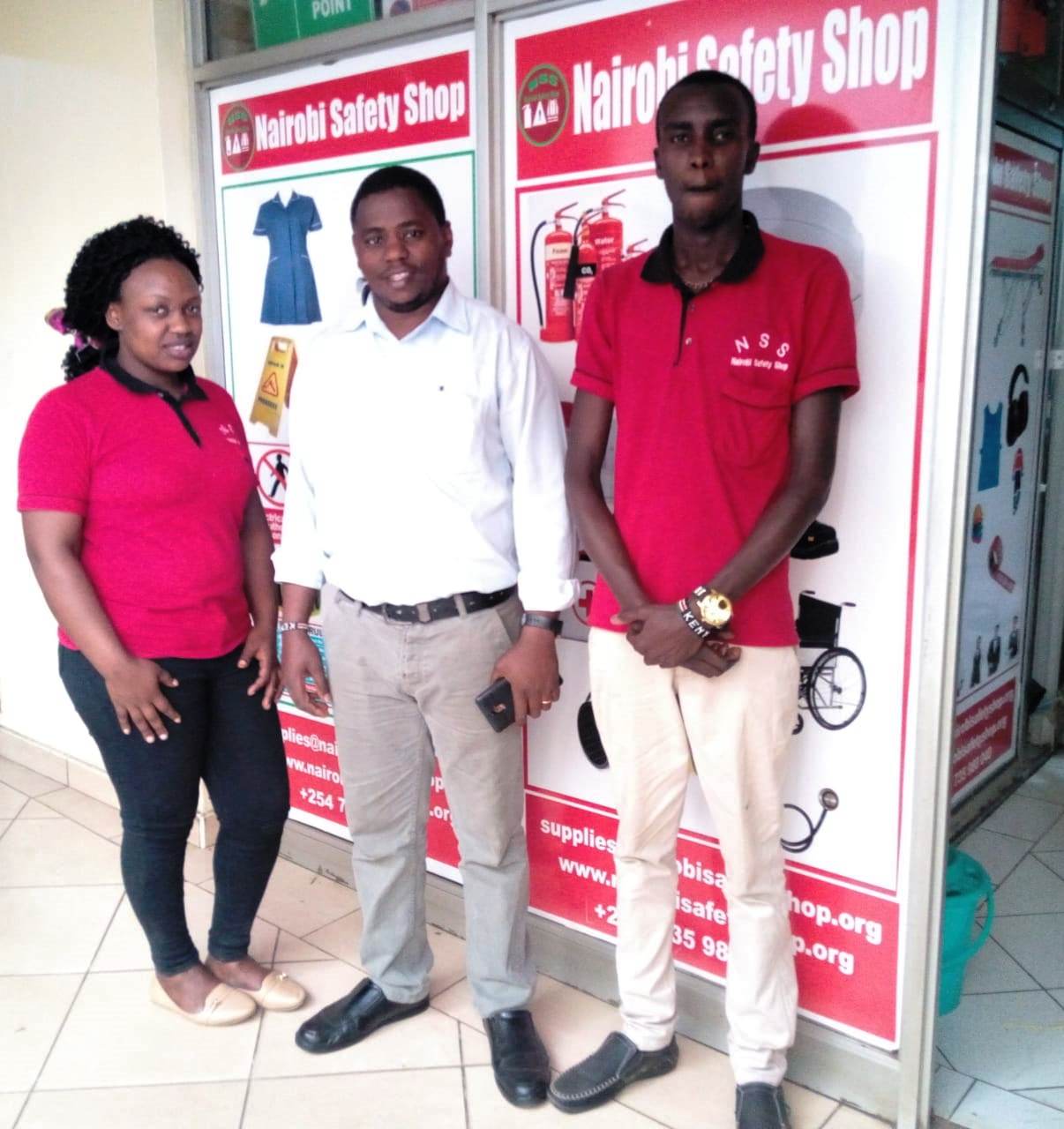Safety in cold rooms and coolant areas is essential for protecting both workers and the integrity of stored goods in temperature-controlled environments. As Ambassador Steve Mbugua, the globally recognized Ambassador of Safety, I am dedicated to advancing safety practices in these specialized areas to ensure optimal conditions and minimize risks. In this article, we explore key strategies for enhancing safety in cold rooms and coolant areas, including proper insulation, effective temperature monitoring, safe handling procedures, and emergency preparedness. By prioritizing safety in these environments, we can prevent accidents, maintain product quality, and ensure a secure and efficient operation. Let’s delve into the critical components of effective safety management in cold rooms and coolant areas and work together to create safer working conditions.
Cold rooms are essential for preserving perishable items in industries such as food storage, pharmaceuticals, and biotechnology. However, working in or around cold rooms poses specific hazards that require rigorous safety protocols to ensure the well-being of employees and the integrity of stored items. This detailed guide covers various aspects of cold room safety, including the classification of cold rooms, common hazards, safety measures, and regulatory compliance.
Classification of Cold Rooms
1. Walk-In Cold Rooms
2. Blast Freezers
3. Cryogenic Freezers
4. Refrigerated Warehouses
5. Pharmaceutical Cold Rooms
6. Biotechnology Cold Rooms
1. Walk-In Cold Rooms
Definition:
• Typically used in food service and retail for short-term storage of perishable goods.
• Temperature range: 0°C to -18°C.
Safety Considerations:
• Insulated Doors: Must be properly sealed to maintain temperature and prevent frost build-up.
• Emergency Exits: Equipped with internal release mechanisms to prevent entrapment.
2. Blast Freezers
Definition:
• Designed to rapidly freeze items, often used in the food industry to preserve freshness.
• Temperature range: -30°C to -40°C.
Safety Considerations:
• Protective Gear: Workers must wear insulated gloves, jackets, and face protection to prevent frostbite.
• Limited Exposure: Restricting the time employees spend inside to prevent hypothermia.
3. Cryogenic Freezers
Definition:
• Used for long-term preservation of biological samples at extremely low temperatures.
• Temperature range: -80°C to -196°C.
Safety Considerations:
• Specialized PPE: Includes cryogenic gloves and face shields.
• Oxygen Monitors: To detect potential oxygen displacement from liquid nitrogen leaks.
4. Refrigerated Warehouses
Definition:
• Large-scale facilities for storing bulk quantities of perishable goods.
• Temperature range: 0°C to -18°C.
Safety Considerations:
• Forklift Safety: Training on operating forklifts in cold conditions where surfaces may be slippery.
• Lighting: Adequate lighting to prevent accidents in dim conditions.
5. Pharmaceutical Cold Rooms
Definition:
• Maintain the integrity of pharmaceuticals by storing them at controlled temperatures.
• Temperature range: 2°C to 8°C for refrigerators, -20°C for freezers.
Safety Considerations:
• Temperature Monitoring: Continuous monitoring systems with alarms for temperature deviations.
• Inventory Management: Proper labeling and shelving to prevent contamination and ensure accessibility.
6. Biotechnology Cold Rooms
Definition:
• Used for storing biological samples, reagents, and other sensitive materials.
• Temperature range: -20°C to -80°C.
Safety Considerations:
• Backup Power: Ensuring a reliable power supply to prevent temperature fluctuations.
• Decontamination Procedures: Protocols for handling spills and leaks of hazardous materials.
Common Hazards in Cold Rooms
1. Extreme Cold Exposure
2. Slips, Trips, and Falls
3. Entrapment
4. Frostbite and Hypothermia
5. Chemical Exposure (e.g., refrigerants)
6. Mechanical Hazards
7. Electrical Hazards
8. Noise Hazards
9. Confined Space Hazards
10. Manual Handling Injuries
11. Ventilation Issues
12. Power Failures
Safety Measures
1. Extreme Cold Exposure
Preventive Actions:
• Insulated Clothing: Wearing multiple layers of thermal clothing.
• Break Schedules: Regular breaks in warm areas to prevent hypothermia.
2. Slips, Trips, and Falls
Preventive Actions:
• Anti-Slip Flooring: Installing textured flooring to improve grip.
• Clear Pathways: Keeping walkways clear of ice, frost, and obstructions.
3. Entrapment
Preventive Actions:
• Emergency Release Mechanisms: Ensuring all doors have functional internal release mechanisms.
• Buddy System: Implementing a buddy system where employees work in pairs.
4. Frostbite and Hypothermia
Preventive Actions:
• Proper PPE: Wearing insulated gloves, hats, and face protection.
• Health Monitoring: Regular health checks for symptoms of frostbite and hypothermia.
5. Chemical Exposure
Preventive Actions:
• Refrigerant Handling Training: Providing training on safe handling and emergency procedures for refrigerants.
• Leak Detectors: Installing detectors for refrigerant leaks.
6. Mechanical Hazards
Preventive Actions:
• Machine Guards: Ensuring all moving parts of equipment are properly guarded.
• Regular Maintenance: Scheduled maintenance to prevent malfunctions.
7. Electrical Hazards
Preventive Actions:
• Insulated Tools: Using insulated tools when working on electrical systems.
• Lockout/Tagout Procedures: Implementing lockout/tagout procedures during maintenance.
8. Noise Hazards
Preventive Actions:
• Hearing Protection: Providing ear protection to employees working in noisy environments.
• Noise Dampening: Using noise-dampening materials in construction.
9. Confined Space Hazards
Preventive Actions:
• Confined Space Training: Providing training on the risks and safety procedures for working in confined spaces.
• Ventilation: Ensuring adequate ventilation to prevent buildup of harmful gases.
10. Manual Handling Injuries
Preventive Actions:
• Ergonomic Training: Training on proper lifting techniques to prevent injuries.
• Mechanical Aids: Providing lifting aids and equipment to reduce manual handling.
11. Ventilation Issues
Preventive Actions:
• Regular Checks: Regularly checking ventilation systems to ensure they are functioning properly.
• Backup Systems: Installing backup ventilation systems in case of failure.
12. Power Failures
Preventive Actions:
• Backup Generators: Installing backup generators to maintain temperature control.
• Alarm Systems: Implementing alarm systems to alert staff of power failures.
Latest Trends in Cold Room Safety
1. Smart Temperature Monitoring: Using IoT devices for real-time temperature monitoring and alerts.
2. Automated Inventory Management: Implementing RFID and barcode systems for efficient inventory tracking.
3. Energy-Efficient Systems: Adopting energy-efficient cooling systems to reduce environmental impact.
4. Advanced Insulation Materials: Using high-performance insulation materials to improve thermal efficiency.
5. Remote Monitoring: Enabling remote monitoring and control of cold room conditions via mobile apps.
6. Predictive Maintenance: Utilizing predictive analytics to schedule maintenance before breakdowns occur.
7. Improved PPE: Developing more advanced and comfortable personal protective equipment.
8. Enhanced Training Programs: Incorporating VR and AR technologies into safety training programs.
9. Integration with Building Management Systems (BMS): Allowing for centralized control and monitoring.
10. Regulatory Compliance Software: Using software solutions to ensure compliance with safety regulations.
11. Biosecurity Measures: Enhancing biosecurity protocols for cold rooms used in biotechnology.
12. Automated Defrosting Systems: Implementing automated defrosting to maintain efficiency.
13. Green Refrigerants: Switching to environmentally friendly refrigerants.
14. Safety Audits: Regular third-party safety audits to identify and mitigate risks.
15. Employee Health Programs: Initiating health programs to monitor and improve employee well-being.
Safety Audits and Inspections
Frequency and Scope:
• Regular Audits: Conducting monthly and annual safety audits to ensure compliance and identify risks.
• Comprehensive Inspections: Including structural integrity, equipment functionality, and emergency systems in inspections.
Documentation:
• Audit Reports: Detailed reports highlighting findings, corrective actions, and follow-up schedules.
• Maintenance Logs: Keeping records of all maintenance activities and equipment checks.
Cold Room Safety Training
Training Programs:
• Initial Training: Comprehensive training for new employees on cold room safety protocols.
• Refresher Courses: Regular refresher courses to keep employees updated on the latest safety practices.
Training Content:
• Hazard Identification: Recognizing potential hazards in cold rooms.
• Emergency Procedures: Steps to take in case of emergencies such as power failures or refrigerant leaks.
• PPE Usage: Proper use and maintenance of personal protective equipment.
• First Aid: Basic first aid training for cold-related injuries.
Safety Equipment and Installations
Essential Equipment:
• Temperature Alarms: Installing alarms that activate when temperatures deviate from set ranges.
• Emergency Lighting: Ensuring adequate lighting in case of power failure.
• Ventilation Systems: High-efficiency ventilation to prevent air quality issues.
Installation Best Practices:
• Professional Installation: Ensuring all equipment is installed by qualified professionals.
• Regular Testing: Regular testing of alarms, lighting, and ventilation systems to ensure functionality.
Regulatory Compliance
Key Regulations:
1. OSHA Standards: Compliance with Occupational Safety and Health Administration (OSHA) standards for cold storage.
2. FDA Guidelines: Adhering to Food and Drug Administration (FDA) guidelines for the storage of perishable goods.
3. ISO Standards: Following International Organization for Standardization (ISO) standards for quality management and safety.
4. EPA Regulations: Environmental Protection Agency (EPA) regulations on refrigerant usage and disposal.
5. NFPA Codes: National Fire Protection Association (NFPA) codes for fire safety in cold storage facilities.
6. ANSI Standards: American National Standards Institute (ANSI) standards for mechanical safety.
7. Local Building Codes: Compliance with local building codes for structural and electrical safety.
8. Hazard Communication Standards: Ensuring proper labeling and communication of chemical hazards.
9. Emergency Planning and Community Right-to-Know Act (EPCRA): Reporting hazardous chemicals stored on-site.
10. Health and Safety at Work Act: Compliance with health and safety regulations for worker protection.
11. Energy Efficiency Regulations: Following energy efficiency regulations to minimize environmental impact.
12. Worker Training Requirements: Adhering to regulations requiring regular worker training and certification.
Cold room safety is crucial for protecting employees, maintaining the integrity of stored goods, and ensuring compliance with regulatory standards. By addressing the various hazards associated with cold room operations, implementing advanced safety measures, and keeping up with the latest trends and technologies, organizations can create a safe and efficient working environment. Continuous training, regular safety audits, and adherence to regulations are essential components of an effective cold room safety program.
In conclusion, safety in cold rooms and coolant areas is crucial for maintaining a secure environment and protecting both personnel and products. As the Ambassador of Safety, I have highlighted the importance of implementing proper insulation, monitoring temperature effectively, and adhering to safe handling practices. By adopting these strategies, businesses can significantly reduce risks, enhance operational efficiency, and ensure the safety and quality of temperature-sensitive goods. Let us commit to championing cold room and coolant area safety and collaborate to create environments where safety and efficiency are seamlessly integrated. Embracing these practices not only safeguards individuals but also supports the smooth operation of crucial temperature-controlled processes.
READ MORE
Extreme Environment Safety and Management
Largest Safety Shop
Workplace Safety Video
Environmental Safety



















